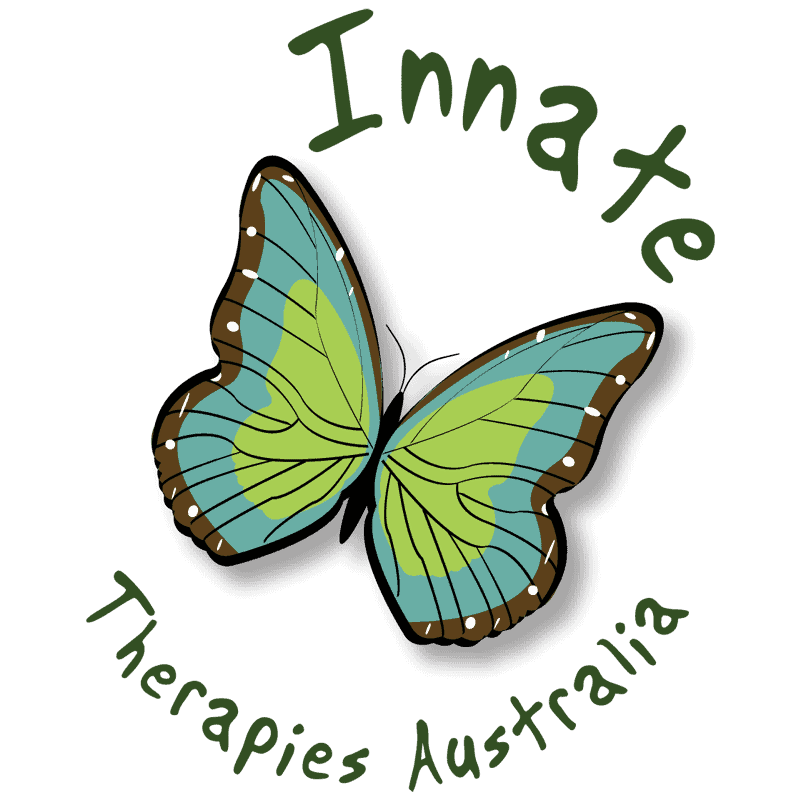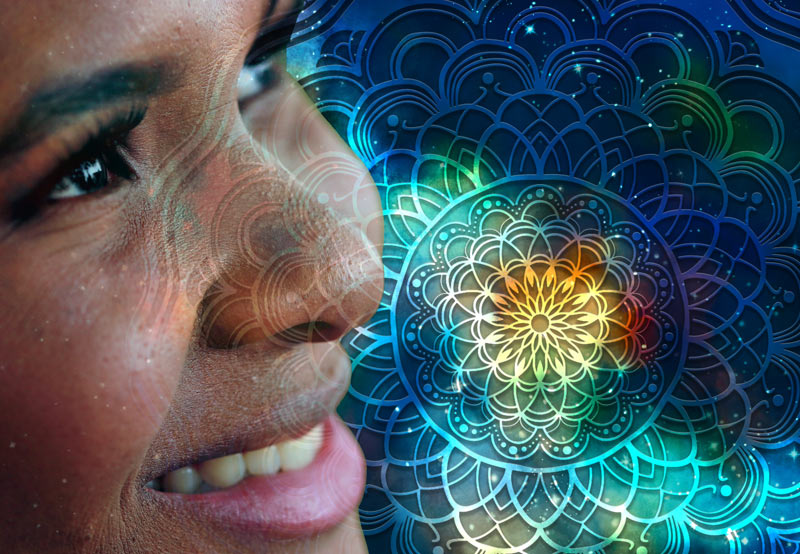Expressive therapies are powerful healing modalities that utilise creative processes to help individuals express, explore, and understand their thoughts, feelings, and experiences. These therapies are rooted in the belief that creative expression can foster emotional healing and personal growth.
They offer unique ways to engage with one’s inner world, providing alternative methods to traditional talk therapies. In this blog, we’ll delve into several expressive therapy techniques, including Sandplay, Symbol Work, Expressive Art, Mandala Artwork, Body Focus, and Visualisation, examining how each modality contributes to the therapeutic process.
Sandplay Therapy
What is Sandplay Therapy?
Sandplay therapy is a non-verbal, experiential therapeutic approach that involves the use of a sandbox and miniature figures to create scenes or worlds. Developed by Dora Kalff, it is based on the principles of Jungian psychology. Clients are encouraged to create scenes in a sandbox using a variety of miniature figures, objects, and natural elements. The therapist provides a safe and supportive space, allowing the client to explore and express their inner world.
How Does Sandplay Work?
The sand tray represents a microcosm of the client’s psyche. As clients place figures and objects in the sand, they project aspects of their inner world, including unconscious thoughts and feelings, into the tray. The process of creating these scenes enables clients to visualise and externalise their internal conflicts, fears, and desires, providing a tangible way to work through them.
The role of the therapist is to observe and support the client without interpreting the scene immediately. Instead, the therapist allows the client to explore and express, often leading to insights and self-awareness that emerge organically. The act of creating in the sand tray can also provide a sense of control and mastery, which can be particularly therapeutic for clients who feel overwhelmed or powerless in their everyday lives.
Benefits of Sandplay Therapy
– Non-verbal Expression: Sandplay provides a way for individuals to express themselves without relying on words. This is particularly beneficial for children or adults who may find it difficult to articulate their feelings verbally.
– Access to the Unconscious: By working with symbols and figures, clients can access and express unconscious material, bringing hidden conflicts, memories, or emotions to the surface.
– Emotional Release and Healing: The tactile nature of sandplay can be soothing and grounding, helping clients to release pent-up emotions and gain a sense of calm.
– Creative Problem Solving: Creating scenes in the sand allows clients to explore different scenarios and solutions to their problems, fostering creativity and resilience.
Symbol Work
What is Symbol Work?
Symbol work is a form of expressive therapy that uses symbols to represent emotions, experiences, and concepts. It draws on the idea that symbols are a universal language of the unconscious mind, capable of conveying complex thoughts and feelings that might be difficult to express verbally. Clients may use physical objects, drawings, or imagined symbols during therapy sessions to represent different aspects of their lives or internal states.
How Does Symbol Work Operate in Therapy?
In symbol work, the client selects or creates symbols that resonate with their current feelings or situations. These symbols can be anything from images in a drawing to objects in the room or even abstract concepts. The therapist then helps the client explore the meaning and significance of these symbols, facilitating a deeper understanding of the client’s inner world.
For instance, a client might choose a symbol that represents a burden they are carrying. By exploring this symbol in therapy, they can understand their burden better. They can see how it affects their life and find ways to address or ease it. Symbol work taps into the rich, imaginative capacities of the human mind, offering a flexible and creative pathway for self-exploration.
Benefits of Symbol Work
– Depth of Insight: Symbols can convey deep, often unconscious, aspects of a person’s experience, offering insights that might not surface through direct discussion.
– Enhanced Emotional Expression: Using symbols can provide a safer way for clients to express difficult or painful emotions indirectly.
– Personal Empowerment: By identifying and working with symbols, clients can gain a sense of control over their experiences and find new ways to cope with challenges.
– Universal Connection: Symbols are often universal, transcending language and culture, allowing clients to connect with shared human experiences and find common ground.
Expressive Art Therapy
What is Expressive Art Therapy?
Expressive art therapy involves using various art forms, including painting, drawing, sculpture, and collage, to facilitate emotional expression and healing. Being creative can help us understand our feelings, thoughts, and experiences. It allows us to express ourselves better.
Expressive art therapy is different from art made just for beauty. It focuses on healing rather than how the art looks.
How Does Expressive Art Therapy Work?
In expressive art therapy, clients are encouraged to use art materials to create visual representations of their inner experiences. This might involve drawing their feelings, creating a sculpture that represents a challenge they are facing, or using color and texture to express a mood. The therapist provides guidance and support, helping the client to explore and reflect on their creations.
The process of creating art can be both revealing and cathartic, allowing clients to externalize and process emotions in a way that feels safe and contained. The artwork can also serve as a tangible representation of the client’s journey, offering a visual record of their progress and insights.
Benefits of Expressive Art Therapy
– Emotional Expression: Art provides a non-verbal outlet for expressing feelings that may be difficult to articulate in words, such as anger, sadness, or joy.
– Self-Exploration: Engaging in creative activities can help clients explore their identity, values, and beliefs, leading to greater self-awareness.
– Stress Reduction: The act of creating art can be relaxing and meditative, helping to reduce stress and promote a sense of well-being.
– Empowerment and Mastery: Creating art can boost self-esteem and confidence, providing a sense of accomplishment and control.

Mandala Artwork
What is Mandala Artwork?
A mandala is a geometric design that represents the universe in Hindu and Buddhist symbolism. In the context of therapy, mandala artwork involves creating these circular designs as a form of meditation and self-exploration. The word “mandala” is Sanskrit for “circle,” and these designs are often characterised by concentric patterns and symmetrical forms.
How is Mandala Artwork Used in Therapy?
Mandala artwork is used in therapy to promote relaxation, focus, and self-reflection. Clients are invited to create their mandalas, either using pre-drawn templates or by designing their own from scratch. Drawing and coloring mandalas can be very calming, helping to relax the mind and create a peaceful state.
In therapy, mandalas are often used to explore themes such as balance, harmony, and the integration of opposites. Clients may be asked to create a mandala that represents their current emotional state, a desired outcome, or a particular theme they are working on in therapy. The completed mandala can then be discussed and reflected upon, revealing insights into the client’s inner world.
Benefits of Mandala Artwork
– Mindfulness and Relaxation: Creating mandalas can induce a meditative state, helping clients to relax and focus on the present moment.
– Emotional Healing: The process of creating and reflecting on mandalas can help clients process and release emotions, promoting emotional healing.
– Personal Insight: Mandalas can serve as a mirror, reflecting the client’s inner state and providing a deeper understanding of their thoughts and feelings.
– Integration and Balance: The circular form of the mandala symbolizes wholeness and unity, helping clients to integrate different aspects of themselves and find balance.
Body Focused Expressive Therapy
What is Body Focused Expressive Therapy?
Body-focused expressive therapy, often referred to as somatic therapy, involves using the body as a primary avenue for exploring and processing emotions. It is based on the idea that the body and mind are interconnected and that emotional experiences are stored in the body. This form of therapy encourages clients to pay attention to their bodily sensations, movements, and impulses as a way of accessing and expressing emotions.
How Does Body Focused Expressive Therapy Work?
In body-focused expressive therapy, clients are guided to tune into their bodily sensations and movements. This might involve breathing exercises, movement, posture awareness, or guided visualisations that focus on different parts of the body. By paying attention to bodily sensations, clients can become more aware of how emotions manifest in the body and how their physical state affects their mental and emotional well-being.
Therapists may use techniques such as grounding exercises to help clients feel more connected to their bodies or movement exercises to release tension and express emotions. The goal is to help clients understand their bodies. This understanding connects to their emotions. It promotes a sense of connection and awareness.
Benefits of Body Focused Expressive Therapy
– Emotional Awareness: By focusing on the body, clients can become more aware of their emotions and how they are experienced physically.
– Stress Reduction: Techniques such as deep breathing and grounding can help to reduce stress and promote relaxation.
– Release of Tension: Physical movement can help to release emotional tension stored in the body, providing relief and a sense of liberation.
– Improved Mind-Body Connection: This therapy fosters a greater connection between the mind and body, promoting overall well-being and integration.
Visualisation Techniques
What are Visualisation Techniques?
Visualisation involves using the imagination to create mental images that can help to explore, understand, and change one’s inner experiences. It is a technique often used in various forms of therapy, including cognitive-behavioral therapy (CBT), guided imagery, and mindfulness practices. Visualisation can be used to manage stress, overcome fears, and achieve personal goals.
How are Visualisation Techniques Used in Therapy?
In therapy, visualisation techniques may involve guided imagery exercises where the therapist leads the client through a series of mental images designed to promote relaxation, healing, or insight. For example, a client might be guided to imagine a peaceful place where they feel safe and calm, helping to reduce anxiety and stress. Alternatively, visualisation can be used to rehearse positive outcomes, such as imagining oneself successfully handling a challenging situation.
Therapists may also use visualisation to help clients connect with their inner resources or strengths, visualise the resolution of conflicts, or explore different aspects of themselves. The images created in the mind can be as powerful and real as physical experiences, making visualisation a potent tool for transformation.
Benefits of Visualisation Techniques
– Stress and Anxiety Reduction: Visualisation can create a mental escape, promoting relaxation and reducing anxiety.
– Empowerment: Visualising success or positive outcomes can boost confidence and motivation.
– Emotional Processing: Visualisation provides a safe way to explore and process emotions, offering a sense of control over one’s experiences.
– Healing and Recovery: Guided imagery can be used to visualise healing and recovery, supporting physical and emotional well-being.
Expressive therapies provide a rich tapestry of approaches that tap into the creative and symbolic aspects of the human experience. From Sandplay to Mandala Artwork, each method offers unique pathways for exploring and understanding one’s inner world.
These therapies help people share their feelings, understand their experiences, and promote healing and personal development. Expressive therapies are important for mental health and well-being. They can be used alone or as part of larger treatment plans.

